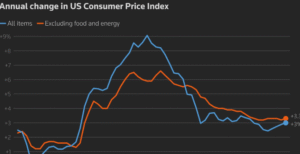$GLD $SLV $GC
#Gold #SpotGold #PreciousMetals #GoldPrice #MarketAnalysis #Investing #Trading #FXEmpire #Bullion #SafeHavenAssets #Commodities #JamesHyerczyk #MacroOutlook
Spot gold is currently moving towards a critical price level of $2,604, according to financial market analyst James Hyerczyk from FX Empire. A successful breakout above this key resistance point could set the stage for significant price movement in the near term. Investors and traders are closely monitoring price activity around this level, understanding that it could serve as a catalyst to further gains, particularly in light of current macroeconomic uncertainties. Should gold break above $2,604, it could quickly trigger a run-up towards $2,653 – a short-term objective that many market participants have set their sights on in light of the recent trends.
Beyond $2,653, Hyerczyk notes that spot gold could begin targeting retracement zones between $2,663 and $2,693. These Fibonacci retracement levels are often key because they represent critical technical points on the chart where price reversals can occur or, conversely, where a breakout can fuel further momentum. Investors are increasingly bullish amid ongoing inflationary pressures and global economic instability caused by a mix of rising interest rates and geopolitical strife. From a long-term investment perspective, gold’s status as a safe-haven asset suggests that more capital inflow could support higher prices, especially if risks in equity markets and the broader economy persist.
However, it’s important to recognize opposing dynamics as well. Any retreat in inflation rates or a stronger-than-anticipated recovery in major economies could reduce demand for gold as investors pivot toward riskier assets like equities. The Federal Reserve’s monetary policy decisions surrounding interest rate hikes, or an indication of policy relaxation, would be pivotal in influencing gold’s ability to sustain above these critical levels. As the Fed navigates the delicate balance between inflation control and economic stabilization, uncertainty remains a major factor in gold markets, keeping both retail and institutional players on edge.
Market participants should also consider the role of the U.S. dollar ($USD) and Treasury yields, as both have historically played significant roles in dictating gold’s price movements. A stronger dollar could undercut gold’s upward momentum by making commodities priced in dollars more expensive for foreign buyers while higher yields reduce gold’s appeal since bullion does not offer interest. In the next few sessions, any fluctuation in these factors could determine whether gold manages to maintain its current bullish trajectory beyond the $2,604 level. Until then, gold traders will carefully be analyzing for any directional shifts in both economic and political landscapes.










Comments are closed.